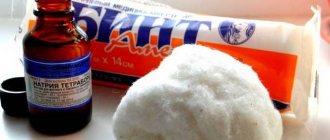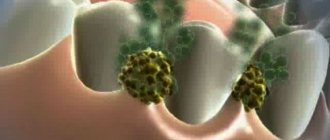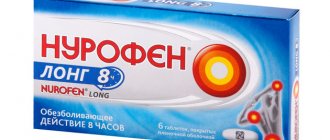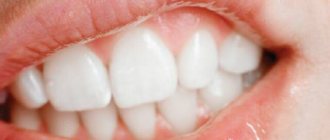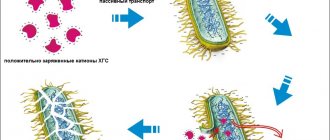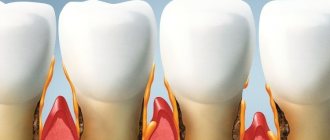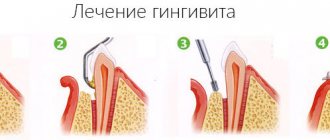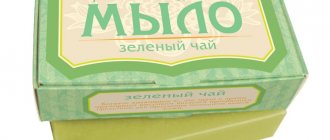How to gargle correctly?
The medicine has anti-inflammatory, antimicrobial and analgesic properties. It is recommended for the following inflammatory diseases:
- acute and chronic tonsillitis;
- pharyngitis;
- laryngitis;
- ARVI;
- condition after tooth extraction;
- gingivitis;
- stomatitis;
- flux;
- disinfection of removable dentures.
Although the procedure is simple, it requires following the recommendations:
- Rinse your throat with boiled water before starting.
- Take 15 ml of the prepared solution into your mouth. To do this, it is advisable to measure the volume with a special measuring spoon.
- Tilt your head back a little and rinse for half a minute. At the end of the procedure, the treated liquid is spat out. Repeat it at least three times.
There is no need to extend the duration of the procedure yourself. Eating should be postponed for 2 hours after rinsing. This will allow the medicine to maximize its properties on the affected mucous membranes. The frequency of treatment should be 2 times a day for mild pain, 3 times for intense pain. After the procedure, provide maximum rest to your throat.
The drug exhibits its properties better at a temperature of 22-40 degrees.
The course of therapy is 6-15 days. The duration of treatment is determined by the severity of the pathology and the age of the patient. Chlorhexidine is prescribed as part of complex therapy. When used correctly, it effectively exhibits its properties.
How to prepare a rinse solution?
To prepare a medicine suitable for use, you will need to purchase Chlorhexidine with a concentration of 0.2 or 0.5 percent.
How to dilute the medicine for gargling:
- observing a proportion of 1 to 2 (where 1 part is distilled water, and 2 parts are Chlorhexidine).
- keeping the proportion 1 to 1 (the amount of water is increased). This solution is suitable for use in pediatrics, and it is also used by people with high sensitivity of the mucous membrane to the drug.
Attention! Boiled or distilled water is used as a dilution. Less often diluted with lemon juice or herbal decoctions.
Instructions for use of the drug for adults
The instructions for use indicate that the medication is recommended to be used according to the following scheme:
- Rinsing should be done 2 times a day: in the morning and before bedtime.
- The procedure is carried out after first clearing the oral cavity of food debris.
- It is worth rinsing your mouth with warm water, then brushing your teeth and tongue.
- Rinse your throat with boiled or distilled water and begin the procedure.
The doctor will tell and explain exactly how to rinse correctly. Adults are recommended to carry out the procedure before eating. The average duration of treatment is 5-10 days.
Information: treatment is carried out until the unpleasant symptoms disappear; When the sore throat goes away, you will have to gargle for another day to reduce the risk of relapse.
Other features of the use of the drug for diseases of a venereal, urological or gynecological nature:
- inject the solution into the urethra or vagina;
- remain in a lying position for at least 15 minutes;
- manipulations are recommended to be carried out in the morning and before bedtime.
For treating wounds and skin:
- Apply a small amount of product to a sterile bandage or cotton wool.
- Apply to the damaged area if the wound is not bleeding.
Chlorhexidine for children
The question often arises: can young children treat their throats with this medication? The following medication dosage regimen is suitable for children:
- the product is applied to a cotton pad or swab;
- it is used to treat the affected throat.
If the child is over 6 years old, then it is worth diluting Chlorhexidine in a ratio of 1 to 1 with distilled water. If the child does not like the taste of the drug, it can be sweetened with honey or sugar syrup.
Can it be used during pregnancy and breastfeeding?
Gargling a sore throat during pregnancy can be done with Chlorhexidine. The drug does not affect the process of growth and formation of the fetus, does not change the taste of breast milk and does not affect its qualitative and quantitative characteristics.
How to use the medication during pregnancy and lactation to treat a sore throat:
- Use a solution with a concentration of active substance of 0.5%.
- Dilute it with distilled water in a ratio of 1 to 1.
- Carry out procedures daily, at least 2 times a day.
Use of the drug for angina
For angina, the medication is prescribed as part of complex therapy, in combination with other drugs of various types.
How to use Chlorhexidine for purulent sore throat:
- it is advisable to give preference to a spray;
- Carry out procedures regularly, several times a knock;
- After cleaning the mouth, rinse your throat.
For purulent sore throat, you can use a concentrated solution without diluting it with water to achieve the fastest result.
Chlorhexidine for pharyngitis
For pharyngitis, the drug is used as part of complex therapy; it is combined with other medications. To eliminate unpleasant symptoms, it is recommended:
- Purchase a drug with an active ingredient concentration of 0.5% from a pharmacy chain.
- Without diluting with water, carry out a standard gargling.
- The average duration of the procedure is 30 seconds.
- One rinse will require at least a tablespoon of Chlorhexidine.
- Frequency of procedures: 3 times every day after meals.
- After gargling, do not eat or drink for 2 hours.
Attention! It's good to alternate procedures. Throughout the day, use not only medications, but also decoctions of medicinal herbs and plants.
Many patients mistakenly consider pharyngitis to be a type of tonsillitis. But this opinion is wrong. The inflammatory process in this disease affects lipoid tissue and occurs deep in the pharynx. You will have to influence it with redoubled force and diligence.
A few words about the medicine
Chlorhexidine is a safe and reliable drug for irrigation of the mouth and throat in adults and children. It is widely prescribed in ENT practice and is intended to eliminate the inflammatory process in the oropharynx, which develops when exposed to an infectious agent. The product has the following properties:
- inhibits the vital activity of various types of pathogenic microflora, but does not affect the beneficial microbes of the body;
- reduces pathological manifestations and washes away microflora and their waste products from the mucous membranes;
- accelerates the regeneration of damaged soft tissues;
- eliminates plaque.
Chlorhexidine has a wide range of uses, which depends on the concentration of the active substance:
- 0.05% - used to treat gums, throat and oral mucosa;
- 0.5% - treats wound surfaces, burns, and is used to disinfect medical instruments;
- 1% - the surgeon’s hands are treated;
- 5% - used for the manufacture of water- or glycerin-based preparations.
Many people are interested in whether Chlorhexidine is Hydrogen Peroxide or not. Although both drugs belong to the group of antiseptics, unlike Chlorhexidine, Hydrogen Peroxide contains another active ingredient.
Release forms
Pharmacies offer the drug in the following forms (the list is not complete):
- A solution of 0.05% in bottles of 70 and 100 ml for rinsing the throat and mouth with undiluted chlorhexidine.
- Vaginal suppositories.
- Gel with 0.5% concentration.
Chlorhexidine is included in other drugs, for example:
- Solutions for mouth rinses after tooth extraction, dental interventions - “Amident”, “Elgidium”, “Eludril”.
- Gels for gums “Metrogil denta”, “Dentamet”, “Elugel”.
- Lozenges for sore throat – “Anti-Sore throat formula”, “Hexoral tabs”.
Rinse for sore throat and tonsillitis
Diseases require an integrated approach: the attending physician prescribes an antibacterial drug and a local rinse. The procedure removes purulent plaque on the tonsils and destroys harmful microbes. During this process, it is important to use a solution at room temperature. This way the medicine will temporarily eliminate pain and discomfort in the throat.
If you have a sore throat, it is recommended to gargle 2 times in a row. After the patient rinses his mouth with warm water to remove food debris, he takes a tablespoon of Chlorhexidine. Then he carries out the procedure for 30 seconds and spits out the liquid.
During the first rinse, purulent plaque is eliminated. After a short period of time, the procedure is repeated to cover the tonsils with a protective layer. This will prevent the formation of pus.
During a full-blown clinical picture, gargling with Chlorhexidine for sore throat is necessary every 3 hours. When relief in the throat occurs, the procedure is carried out 3 times a day. After this, you should refrain from eating food for at least 1 hour.
Rinse rules
With gingivitis, which is accompanied by swelling and pain of the gums, people brush their teeth very poorly, sparing themselves.
This leads to a large amount of soft plaque and food debris accumulating on the teeth and gums. The plaque accumulates even more pathogenic microorganisms, which aggravate the picture of inflammation. In this clinical situation, doctors recommend rinsing the mouth with Chlorhexidine bigluconate 0.05% twice a day, but before rinsing, the teeth must be thoroughly cleaned. To brush your teeth to reduce pain, it is recommended to use a toothbrush with soft bristles. To the question: “Is it possible to rinse your mouth with Chlorhexidine for gum inflammation?” Dentists answer as follows. The inflammatory process will never go away on its own. Treatment must be carried out without fail, otherwise gingivitis will be complicated by more serious diseases of the oral cavity. The most effective antiseptic is Chlorhexidine solution.
How to use Chlorhexidine for ARVI?
In acute respiratory viral infection, the inflammatory process is localized in the nasopharynx. First, rinse your mouth with plain water to remove any remaining food. Then the medicine is poured into the measuring cap, and the patient rinses his mouth and throat with it. The interval between the procedure and food intake should not be less than 1.5 hours. Adults perform it up to 6 times a day for 7 days. Instead of rinsing, you can spray an antiseptic.
You should not treat your throat with medication when complications of ARVI develop - sinusitis, otitis media. If the solution gets into the paranasal sinus or Eustachian tube, it may cause worsening. Rinsing the nasal passages during a cold is not advisable due to the low effectiveness of the procedure. After it, nosebleeds may develop as the mucous membrane dries out.
Soreness, discomfort and pain disappear gradually as the infectious process is destroyed.
Chlorhexidine does not have an immediate effect. You cannot expect an instant effect from it.
Why do you need Chlorhexidine: properties and action
After a tooth is removed, an open wound remains in the gum and fills with blood. A blood clot forms in the hole, protecting the open area of the periosteum from the penetration of pathogenic bacteria and microbes. If the clot does not adhere tightly to the socket or is accidentally damaged during eating, the risk of infection of the bone tissue and the development of osteomyelitis of the jaw increases - a purulent-inflammatory pathology, which, if not treated in a timely manner, can lead to the death of bone structures (osteonecrosis).
And this is how a blood clot may look in real life - it is very important not to wash it out when rinsing your mouth
To avoid damaging the clot, the following recommendations must be followed:
- in the first 1-2 days after removal, you should not drink through a straw, spit saliva, or perform other actions that create a vacuum in the mouth;
- You can chew on the side on which the removal took place 72 hours after surgery;
- You need to rinse your mouth carefully, trying not to make too active movements;
- Do not touch the clot with your tongue or try to remove it from the hole.
Another common complication after tooth extraction is alveolitis. This is a disease in which inflammation of the socket occurs. The pathology is accompanied by fever, severe pain, which can radiate to the ear, eye area, jaw and cervical and submandibular lymph nodes. The gums at the extraction site swell, and severe swelling and redness appear.
Development of alveolitis in the socket after tooth extraction
The main cause of alveolitis is non-compliance with the hygiene regime and an increase in the number of pathogenic flora in the oral cavity. Pathogenic microorganisms entering the alveoli cause inflammation of soft tissues and the development of a pathological process. To prevent alveolitis and other possible complications, the patient is prescribed local treatment of the oral cavity with antiseptic solutions, one of which is Chlorhexidine. The use of this drug ensures disinfection of the mucous membranes and hard tissues of the tooth and prevents the development of infectious and inflammatory processes.
Tooth extraction is a full-fledged surgical operation.
Video - “Chlorhexidine”: application and effectiveness
Rinse for pharyngitis and laryngitis
Complex therapy includes the use of antibiotics, drugs aimed at improving sputum separation, and antiseptics for local treatment of the affected organ. To carry out the procedure, take 1 tablespoon of 0.05% Chlorhexidine solution.
Chlorhexidine for mouth rinse, method of use for throat diseases. Take the liquid into your mouth and rinse it for 30-40 seconds. Then they wait a little and repeat the action. The antiseptic coats the tonsils, protecting them from the proliferation of pathogenic microbes. In case of severe inflammation, it is recommended to carry out the procedure every 3-4 hours. The longer the active components remain on the surface of the inflamed larynx, the faster the patient experiences a therapeutic effect.
In addition to rinsing, the patient must not talk for 5-7 days and not eat hot, cold, spicy foods that irritate the mucous membrane.
For pharyngitis, treatment can be supplemented with inhaled Chlorhexidine. To do this, use 15 ml of a 0.05% solution, which is placed in a nebulizer.
How to rinse your gums with Chlorhexidine
Chlorhexidine rinsing for gum inflammation can only be done with a dentist's prescription . Self-administration of the drug without prior consultation with a doctor can lead to many undesirable effects.
Inflammation of the gums is manifested by their swelling and increase in size, redness, soreness and bleeding; a change in the taste characteristics of the foods consumed can often be observed. In this case, there is a direct indication to rinse the gums with Chlorhexidine. In addition, Chlorhexidine has the ability to relieve toothache and prevent the formation of tartar. This is another advantage of using Chlorhexidine for gums.
But it must be used correctly. Rinsing the gums should be done with a warm solution of Chlorhexidine. The drug solution is taken into the mouth and the oral cavity is slowly rinsed. Thus, the drug is evenly distributed in the mouth and reaches even remote areas of the oral cavity. Then Chlorhexidine needs to be spat out. If desired, you can repeat the procedure.
Due to the long-lasting effect of the drug, there is no need to rinse the gums frequently . It is enough to use the medicine two or three times a day. If you often use Chlorhexidine to rinse your mouth, there is a possibility of negative effects of the drug.
Swallowing the medicine is contraindicated. If a small amount of the product was swallowed when rinsing the gums, you need to drink ten, or better yet twenty, tablets of activated carbon (or other sorbents in an equivalent dose) and wash them down with plenty of warm water. If a large amount of Chlorhexidine gets into the food tract, you should seek help from a doctor. It is indicated to rinse the stomach.
Algorithm for rinsing gums with Chlorhexidine
It is imperative to use the medicine correctly. It is used like this:
- Use a warm, weak aqueous solution of the drug;
- Take the required amount of medicine into the mouth;
- Rinse the oral cavity with slow smooth movements;
- Spit the solution;
- If necessary, you can repeat the rinsing.
Under no circumstances should you swallow Chlorhexidine solution.
How to use during pregnancy and lactation?
During the gestational and lactation period, the medicine is used with caution with the permission of a specialist, despite the fact that it is not absorbed into the bloodstream. The drug does not cause negative effects in children. The active substance has an effect only on the surface of the mucosa. The active ingredient does not penetrate into the bloodstream by more than 1%. That is why the medicine is absolutely safe for a pregnant woman and fetus, as well as a breastfed child.
If the attending physician prescribes Chlorhexidine, then gargling during pregnancy and lactation is performed according to a similar scheme as for adult patients. The course of therapy is 7-15 days.
The only caveat is that it is extremely important for a pregnant woman to be extremely careful during the procedure. You should not swallow even a small amount of medication to avoid causing side effects. If it is impossible to use the drug, the doctor prescribes analogues of the medication - Miramistin, Furacilin.
Use of chlorhexidine in dentistry
You cannot do without it in dentistry, because it is merciless to the numerous and unnecessary microorganisms that live in our oral cavity. But its most important advantage is that this solution does not lose its disinfecting ability even in the presence of pus and blood. Dentists most often use chlorhexidine when required:
- disinfecting the doctor’s hands (before putting on medical gloves);
- treatment of complex inflammatory processes (for example, chronic generalized periodontitis);
- creating the maximum possible sterile conditions in the mouth necessary for tooth extraction without negative consequences;
- treatment of various diseases of the gums and mucous membranes at home;
- “superficial” anesthesia for dental treatment (used in conjunction with other necessary medications);
- treatment of the root canals of teeth.
Chlorhexidine is also included in many toothpastes and is used to rinse the mouth for various diseases.
Contraindications for use
Like any medicine, Chlorhexidine has some restrictions on its use. The solution is not recommended for certain conditions:
- individual intolerance to the components of the product;
- children under 7 years of age;
- simultaneous use of other rinsing solutions (hydrogen peroxide).
If the patient follows all the recommendations for using an antiseptic, he rarely develops side effects. Frequent rinsing can cause the following adverse effects:
- discoloration of tooth enamel and dentures;
- accelerated formation of tartar;
- violation of taste perception;
- the formation of a yellow coating on the tongue;
- allergic reactions in the form of skin itching and urticaria.
If the patient swallows an antiseptic, it is necessary to rinse the stomach and take an absorbent. Before use, you should consult your doctor. The doctor will tell you how to gargle correctly.
What kind of medicine is this
Chlorhexidine is classified as an antiseptic drug. It is a drug that prevents the reproduction and activity of pathogenic microorganisms. Its effectiveness has been proven in the treatment of fungal, bacterial and viral diseases.
Read also: Dental antibiotic
The effect of using Chlorhexidine is quite long-lasting, so there is no need to frequently apply it to body surfaces, including mucous membranes. The drug acts with equal effectiveness on both intact and damaged tissues. Chlorhexidine has a unique ability to act in the presence of blood and exudate.
Due to these features, Chlorhexidine is widely used in many areas of medicine. Surgery, ophthalmology, gynecology, dermatovenerology and, of course, dentistry cannot be done without it.
Dentists widely prescribe the drug Chlorhexidine and its derivatives for use in the form of solutions before dental operations (for example, before tooth extraction), after them, or for the treatment of inflammatory diseases of the oral cavity. It is used for rinsing for gingivitis (inflammation of the gums), caries, periodontitis, glossitis and many other diseases, including throat diseases.
Thus, it becomes clear that rinsing the gums with Chlorhexidine is rational and therapeutically reasoned.
How to dilute the drug for an adult?
Different concentrations of the antiseptic limit the scope of its application. A 0.05% solution is used to gargle. This form of release is sold in the pharmacy ready-made in special plastic bottles with a dispenser. They are convenient for treating the affected throat.
If the antiseptic contains a high concentration of the active substance, then at home the solution can be diluted to the required percentage. To do this, take chilled boiled or distilled water. An adult must breed it according to the following rules:
- 0.2% solution - in a ratio of 1:4;
- 0.5% remedy - 1:10;
- 1% — 1:20;
- 5% — 1:100.
If the drug is not diluted, it can cause a burn to the mucous membranes. However, 0.05% antiseptic does not require the addition of water. The drug is ready for use. Otherwise, there is a decrease in the effectiveness of the drug. It is possible to heat the product in a water bath until warm.
Description and composition and properties of Chlorhexidine
The solution has a specific odor, is completely transparent, without turbidity or flakes. The composition includes the following components:
- Chlorhexidine bigluconate – as the main active ingredient.
- Macrogol and other substances - as additional, inactive components.
The following forms of release of the medicine are available in the pharmacy chain:
- solution, in a special dropper bottle;
- spray with a dispenser for convenient spraying into the throat;
- vaginal suppositories with antiseptic effect.
Chlorhexidine bigluconate is the main active ingredient in various formulations of the drug; it renders:
- Antiseptic effect, prevents the growth and reproduction of pathogenic flora.
- It copes well with bacteria and fungi and is effective against most infectious agents.
The drug in any form of release has an effect on gram-positive and gram-negative pathogenic microorganisms. Prevents their reproduction, is effective against viruses, pathogens: hepatitis, HIV, herpes.
Chlorhexidine is used:
- as part of the treatment of diseases of bacterial, viral, inflammatory and infectious etiology;
- as part of preventive procedures;
- for treating the skin of the hands of medical personnel.
The medication is often prescribed to patients during preventive procedures and as part of the treatment of sexually transmitted diseases.
Drug analogues
If a patient has contraindications to the use of Chlorhexidine, the attending physician may prescribe another drug. Table "Chlorhexidine analogues":
| Drug name | Active substance | Manufacturer | Price |
| Miramistin | Benzyldimethyl[3-(myristoylamino)propyl]ammonium chloride monohydrate | LLC "Infamed" (Russia) | 300 rubles |
| Hydrogen peroxide | Hydrogen peroxide | YuzhPharm LLC (Russia) | 35 rubles |
| Furacilin | Nitrofural | OJSC “Dalkhimfarm”, OJSC “Irbitsky Chemical Plant”, OJSC “Tathimfarmpreparaty”, | 50 rubles |
| Rotokan | Flowers of calendula officinalis, chamomile and yarrow herb | JSC Pharmcenter Vilar (Russia) | 50 rubles |
| Bactoderm | Benzalkonium chloride, Chlorhexidine | Laboratoire INNOTECH INTERNATIONAL (France) | 1200 rubles |
The presented products are similar in their properties, are used for rinsing and are prescribed for a similar inflammatory process. However, drugs may differ in their antimicrobial activity.
Side effects and contraindications
Despite all its activity, the drug is low-toxic and has virtually no effect on the cells of the human body. But this does not mean its absolute safety.
It is not recommended to take an antiseptic internally, so as not to endanger the gastrointestinal tract. If suddenly this trouble happens, you need to take activated carbon, enteros-gel and other sorbents, and also rinse your stomach with a solution of potassium permanganate.
Chlorhexidine causes burns to the mucous membrane. Therefore, it cannot be used when it comes to treating an ear with a damaged eardrum, during skull injuries, when there is a risk of contact with the lining of the brain, as well as in case of inflammation of the eyes.
Features of "Chlorhexidine"
When the drug comes into contact with a fungus or bacteria, the antiseptic properties of Chlorhexidine are activated, as a result of which the microorganism dies. The product can cope with any form of bacteria, but, unfortunately, it is powerless in the fight against viruses. The virus shell is quite dense, which is why the active components of the drug are unable to dissolve it.
"Chlorhexidine"
Among all the advantages of the medicine, it is worth noting its long-lasting effect, since “Chlorhexidine”, when rinsed, creates a protective film on the surface of the mucous membrane, which does not disappear for 4-5 hours. The drug can also be used after removal of the hole, as it is able to destroy harmful bacteria in the presence of blood. For this reason, dentists recommend taking Chlorhexidine after various dental procedures.
Chlorhexidine is available without a prescription
Video: Chlorhexidine, instructions
Are there any contraindications
Despite all its beneficial qualities, Chlorhexidine has several contraindications:
- the instructions state that the drug is not intended for children under 7 years of age, because it is dangerous to the body if swallowed;
- people suffering from high sensitivity of the oral mucosa or allergies to certain components of the drug are also not recommended to use it;
- The solution cannot be used together with other iodine-based drugs;
- Regular use of Chlorhexidine as a mouth rinse can cause the patient's tooth enamel to darken. Long-term use of the drug contributes to disruption of the microflora of the oral cavity.
Chlorhexidine has contraindications
For safety reasons, it is still better to avoid using Chlorhexidine if it is contraindicated for you. Before use, be sure to consult a doctor.

